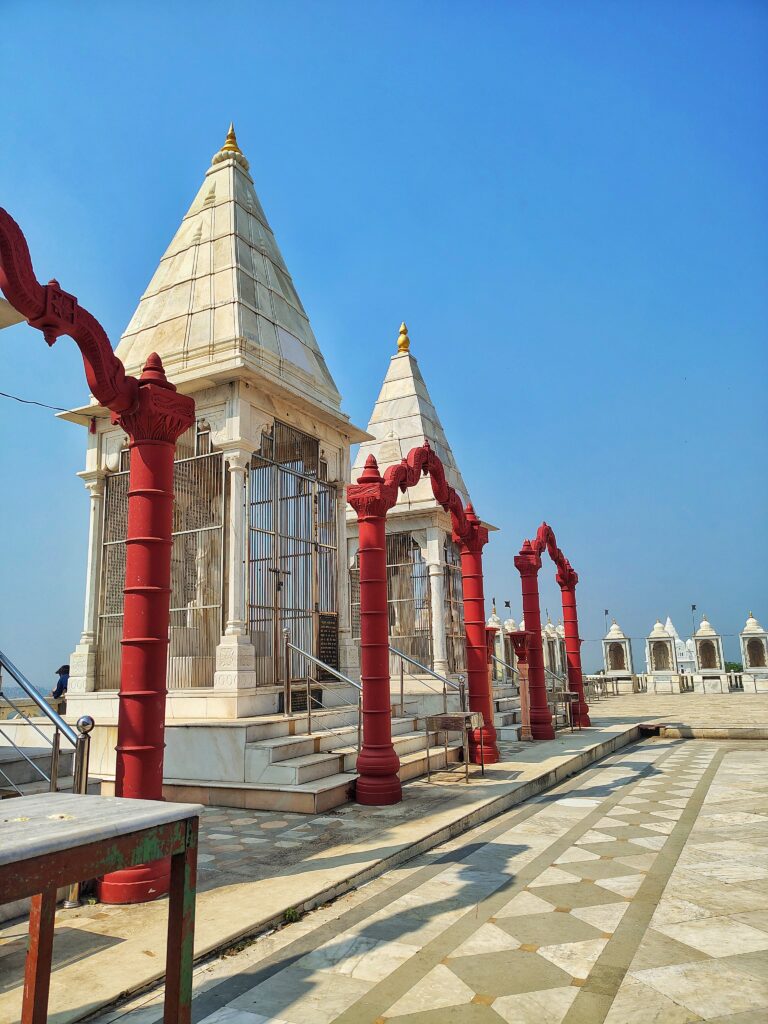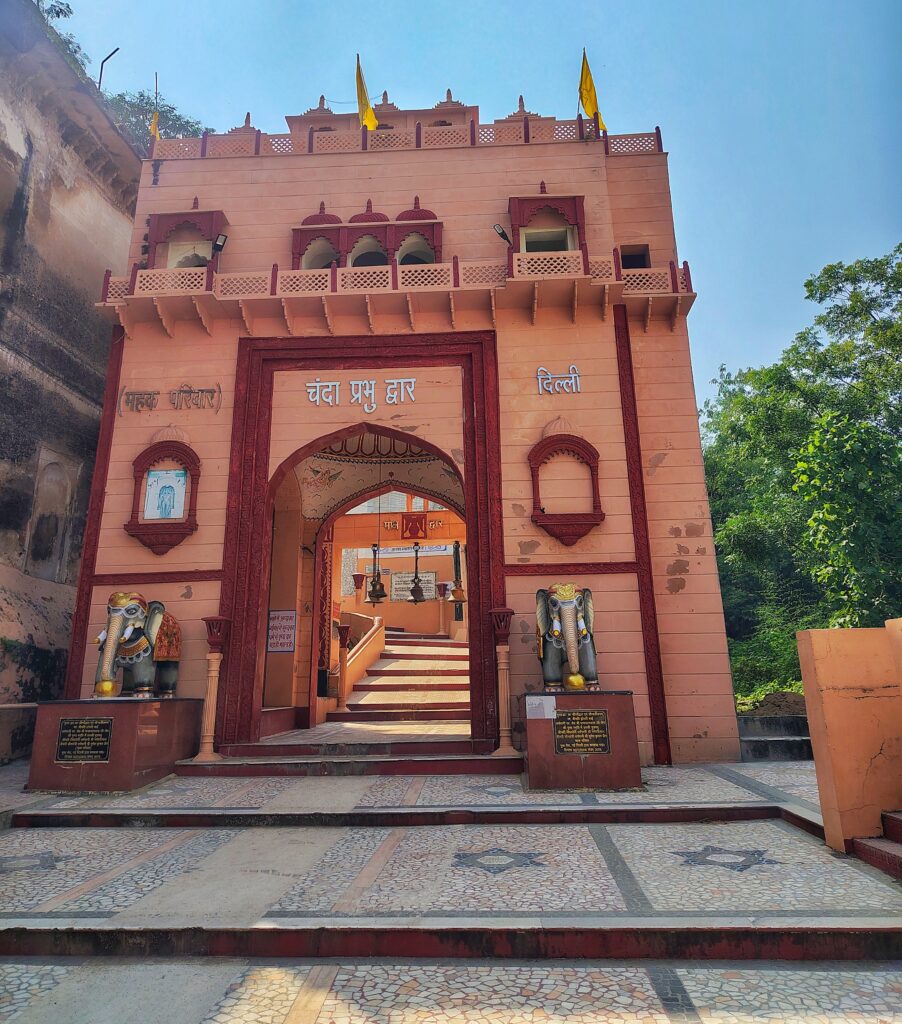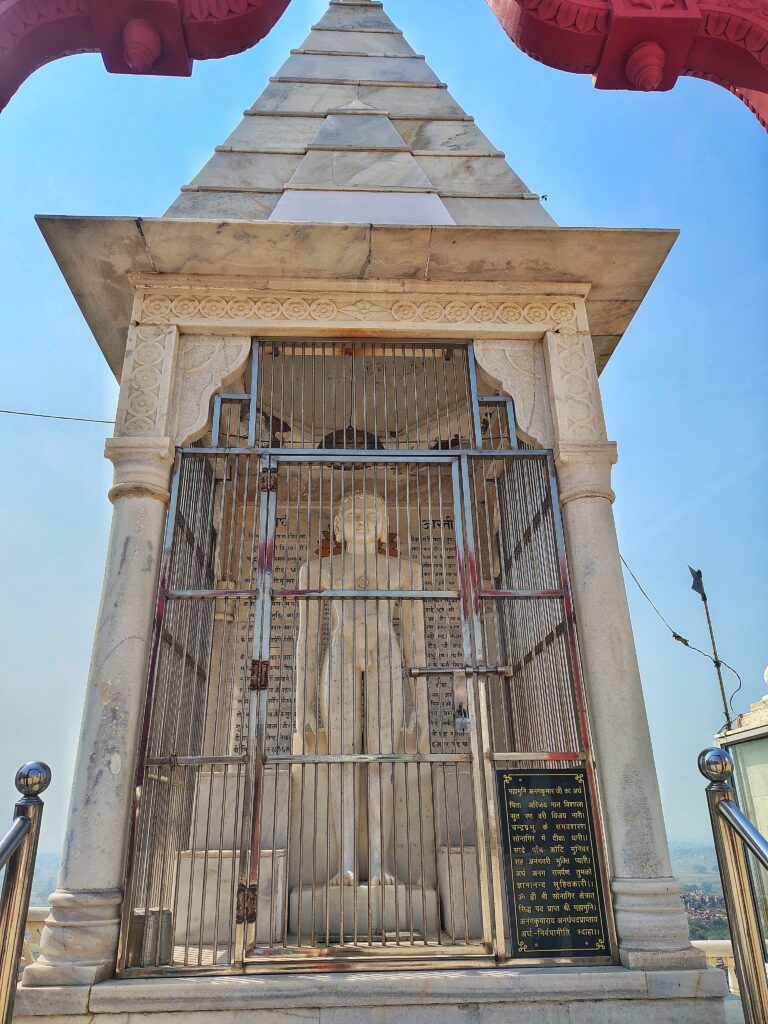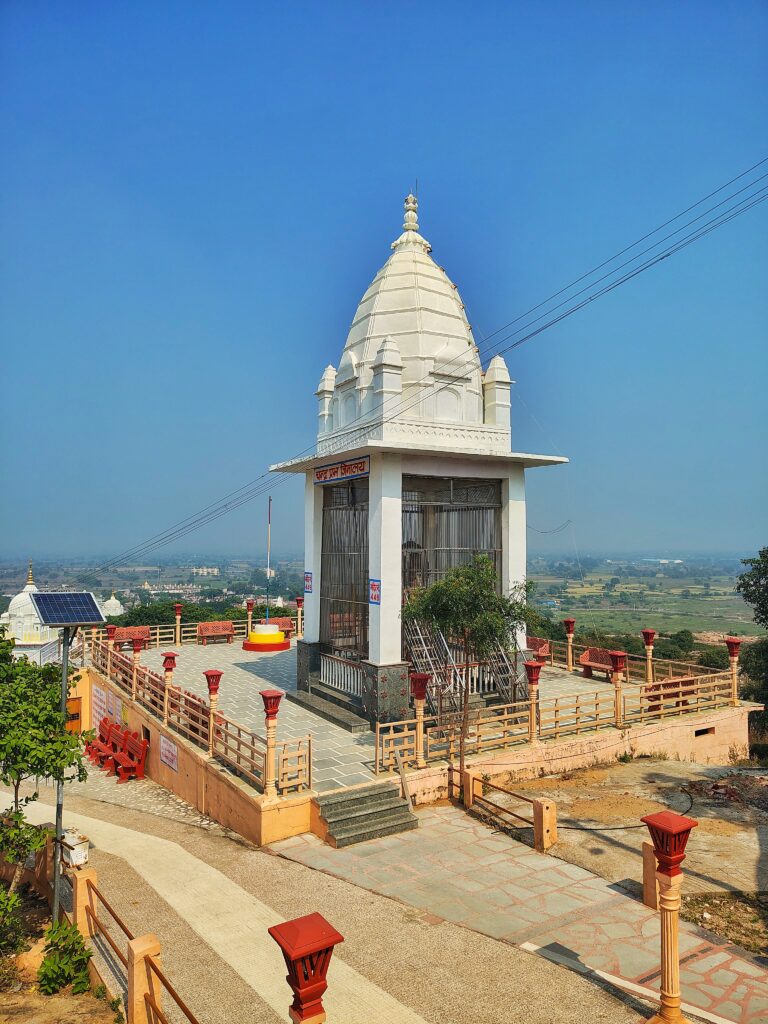Nestled in the heart of Madhya Pradesh, Sonagiri is a captivating destination for those seeking spiritual enlightenment, peace, and a glimpse into the rich heritage of Jainism in India. Renowned as a sacred hill adorned with immaculate Jain temples, this site attracts devotees, history enthusiasts, and travelers alike.
As I set foot on this tranquil hill, I was instantly mesmerized by its serene ambiance. The sight of over 100 gleaming white Jain temples against the vast blue sky created a picture-perfect view. Every step on this sacred land felt like a journey into the divine, and the experience remains etched in my heart.

The Significance of Sonagiri Jain Temples
The word Sonagiri translates to “Golden Peak,” symbolizing spiritual elevation. Located around 15 kilometers from Datia and 60 kilometers from Gwalior, the Sonagiri hill is one of the most revered Jain pilgrimage sites in India.
Sonagiri holds special significance in Jain history. According to scriptures, this is the place where King Nanganag Kumar attained Moksha (salvation) along with millions of other ascetics. For centuries, the temples of Sonagiri have been a beacon of hope and devotion for those seeking liberation from the cycle of life and death.
A Glimpse into Jainism
Jainism is one of the most ancient religions in the world, advocating non-violence (Ahimsa), truth, and self-discipline. Founded by 24 Tirthankaras (spiritual teachers), Jainism emphasizes the path to liberation through right knowledge, right conduct, and right faith.
The teachings of Lord Mahavira, the 24th Tirthankara, form the foundation of Jainism today. His principles resonate in every corner of the Sonagiri Jain Temple complex, where simplicity and spirituality merge seamlessly. Visiting this site offered me a chance to understand the essence of Jain philosophy and its relevance in modern times.
Architectural Splendor of Sonagiri Temples
The Sonagiri Jain Temple complex is a marvel of architecture. Spread across the hill, it boasts 103 white marble temples that exude purity and peace. The design of these temples reflects the core values of Jainism—minimalism, harmony, and devotion.
The main temple is dedicated to Bhagwan Chandraprabhu, the 8th Tirthankara. It features a towering spire symbolizing the soul’s journey toward liberation. The idol of Chandraprabhu, carved from a single piece of white marble, is a sight to behold. Inside the temple, intricate carvings and sculptures narrate stories from Jain mythology, offering visitors a deeper understanding of this ancient religion.
The pathways connecting the temples are meticulously maintained, guiding pilgrims on their spiritual journey. The surrounding landscape of lush greenery enhances the serenity, making it an ideal place for meditation and introspection.

My Experience at Sonagiri Jain Temple
Walking through the Sonagiri Jain Temple complex, I felt an overwhelming sense of calm. The silence was only interrupted by the soothing sound of temple bells and the gentle chants of prayers. The spiritual energy was palpable, creating a profound connection to the divine.
One of the most memorable moments was standing on the hilltop, overlooking the expansive plains below. The view was breathtaking, and it was easy to see why this place has been a haven for saints and devotees for centuries.
The hospitality of the local Jain community also stood out. The Dharmashalas (rest houses) provided by the temple authorities ensured that all pilgrims had a comfortable stay, making the spiritual journey even more fulfilling.

History of Sonagiri Jain Temples
The history of Sonagiri dates back to the 9th and 10th centuries. Over the years, it has become a revered site for Jain pilgrims due to its association with salvation (Moksha). The site gained prominence when King Nanganag Kumar renounced worldly pleasures and attained liberation here.
The temples are a testament to the devotion and craftsmanship of ancient India. They have withstood the test of time, continuing to inspire millions of followers with their intricate details and spiritual significance.
Festivals and Celebrations
The Sonagiri Jain Temples come alive during Jain festivals such as Mahavir Jayanti and Paryushan Parva. These festivals are marked by grand processions, religious discourses, and special rituals.
During these celebrations, the entire temple complex is illuminated with thousands of lamps, creating a mesmerizing view. Devotees from across India and the world gather here to participate, making it a vibrant and spiritually uplifting experience.
Temple Timings and Visitor Information
The Sonagiri Jain Temple complex is open daily from sunrise to sunset. To make the most of your visit, it is advisable to arrive early in the morning when the air is crisp and the atmosphere is peaceful.
Tips for Visitors:
1. Dress Modestly: Ensure your clothing is respectful of the sacred space.
2. Footwear: Remove your shoes before entering the temple premises.
3. Food Restrictions: Avoid carrying or consuming food items inside the temple.
4. Photography: Seek permission before taking photographs inside the temples.
How to Reach Sonagiri Jain Temple
By Road: Sonagiri is well-connected by road. Regular buses and taxis operate from Datia, Gwalior, and nearby cities.
By Rail: The nearest railway station is Sonagir Railway Station, just 3 kilometers from the temple complex. It is a convenient option for travelers.
By Air: The nearest airport is in Gwalior, approximately 60 kilometers away. From there, you can hire a taxi or take a bus to reach Sonagiri.
Best Time to Visit Sonagiri
The ideal time to visit Sonagiri is during the winter months (October to March). The weather during this period is pleasant, making it easier to explore the temple complex. Avoid visiting during the summer, as the heat can be intense, and the monsoon season, which can make the paths slippery.
Why Visit Sonagiri Jain Temple?
1. Spiritual Awakening: The serene ambiance makes it a perfect place for meditation and reflection.
2. Architectural Beauty: The intricacy of the white marble temples is a visual treat.
3. Historical Significance: Discover the rich history of Jainism and its teachings.
4. Cultural Experience: Participate in festivals and connect with the vibrant Jain community.
Conclusion
The Sonagiri Jain Temple is more than just a pilgrimage site—it is a spiritual journey that leaves a lasting impression on the soul. From its breathtaking architecture to its profound historical significance, Sonagiri offers a unique blend of peace, culture, and devotion.
For travelers, history buffs, and spiritual seekers, visiting this sacred hill is an experience that transcends the ordinary. As I left the temple complex, I felt a renewed sense of calm and purpose, carrying with me the lessons of simplicity and spirituality.
Whether you are a devotee or a curious traveler, the Jain Temples of Sonagiri promise an unforgettable experience, inviting you to pause, reflect, and connect with something greater than yourself.



